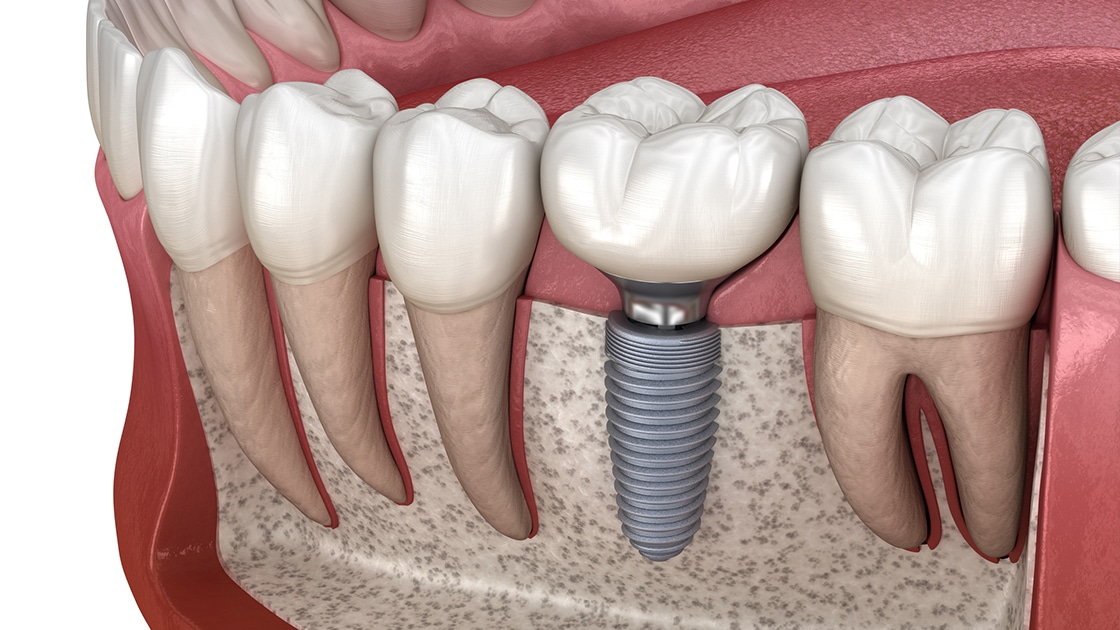10 Simple Techniques For Dental Sense
Table of ContentsNot known Details About Dental Sense Some Known Details About Dental Sense Dental Sense Fundamentals ExplainedHow Dental Sense can Save You Time, Stress, and Money.
are clinical tools operatively implanted right into the jaw to recover a person's ability to chew or their appearance. They give assistance for fabricated (fake) teeth, such as crowns, bridges, or dentures. When a tooth is lost as a result of injury or condition, a person can experience problems such as fast bone loss, defective speech, or changes to eating patterns that lead to discomfort.Dental dental implant systems include an oral implant body and oral implant joint and might likewise consist of an abutment addiction screw. Same day dental implants. The dental implant body is operatively placed in the jawbone instead of the tooth's origin. The dental implant joint is usually affixed to the implant body by the joint addiction screw and prolongs through gum tissues right into the mouth to support the affixed fabricated teeth
(https://www.startus.cc/company/dental-sense)Structure of The Dental Implant System selecting dental implants, speak with your oral supplier regarding the potential advantages and threats, and whether you are a candidate for the treatment. Points to take into consideration: Your overall health is an essential element in figuring out whether you are a good prospect for dental implants, the length of time it will certainly require to heal, and for how long the implant may remain in place.
Cigarette smoking might affect the recovery procedure and lower the long-lasting success of the dental implant. The recovery process for the implant body may take numerous months or longer, during which time you normally have a temporary joint in area of the tooth. the oral implant procedure: Very carefully adhere to the oral health instructions provided to you by your oral service provider.
6 Easy Facts About Dental Sense Explained
Implant failure can lead to the need for an additional procedure to deal with or change the implant system. Recovers the ability to chew Recovers cosmetic look Helps maintain the jawbone from shrinking due to bone loss Preserves the wellness of the bordering bone and gums Aids keep nearby (nearby) teeth steady Improves top quality of life Damages to bordering natural teeth throughout dental implant positioning Injury to the surrounding tissues throughout surgical procedure, such as sinus opening Injury throughout surgical procedure (for instance, crack of surrounding jawbone) Poor function, such as seeming like the teeth do not attack with each other generally A sensation that the tooth hangs or turning in location resulting from a joint screw loosening up Implant body failing (looseness of the dental implant body) because of systemic infection, which might be most likely in people with unchecked diabetes due to local infection in bone and gums supporting the implant body due to delayed recovery, which may be most likely in individuals who smoke Trouble cleansing the gum tissues around the dental implant, leading to bad dental hygiene Neglected periodontal disease Post-surgical feeling numb as a result of nerve impingement or damages Constantly notify healthcare suppliers and imaging service technicians that you have oral implants prior to any magnetic vibration imaging (MRI) or x-ray treatments.
FDA is not knowledgeable about any kind of unfavorable occasions reported for MRI or x-ray treatments with oral implants. Oral implants systems are normally made from products that adhere to worldwide agreement standards of the International Organization for Standardization (ISO) or ASTM International. These standards have details of what makes a secure material.

A dental implant is a structure that changes a missing tooth. With screw-like devices, the specialist inserts a dental implant into the jawbone, and it functions as an anchor for a man-made tooth, called a crown. A device called a joint attaches the artificial tooth to the oral implant. The crown is tailor-made to fit the person's mouth and match the color of their teeth.
See This Report on Dental Sense
Some people are not eligible for dental implant surgical procedure. It is for dental surgeons to operate on individuals with: acute illnessuncontrollable metabolic diseasebone or soft tissue condition or infectionIf these issues are settled, an individual can have the surgical procedure. In, oral surgeons avoid from operating on people with: If people with any of the above undergo oral implant surgery, there is a higher danger of the you can try here dental implant falling short.

Oral dental implant surgical procedure is an individualized procedure. Provide you time to heal. Connect the message and last crown, bridge or denture.
Next off, your surgeon will thoroughly put the oral implant into your jaw. If your dental implant is near the front of your mouth, your dentist will certainly make a temporary tooth for you to use until you recover.
The 6-Minute Rule for Dental Sense
Your service provider can inform you what to expect in your situation. Throughout the healing phase, your jawbone must fuse to the dental implant. This process, called osseointegration, is essential for stability and long-term success. This process can take anywhere from 3 to 9 months. In some instances, it may take much longer.
As soon as your dental implant heals, your dental practitioner can connect the joint (small port article) and your last reconstruction (crown, bridge or denture). This usually takes about one hour to finish and may require a 2nd small surgery. You should not really feel any kind of discomfort throughout your dental implant treatment due to the fact that your service provider will make use of medication to numb your periodontals.